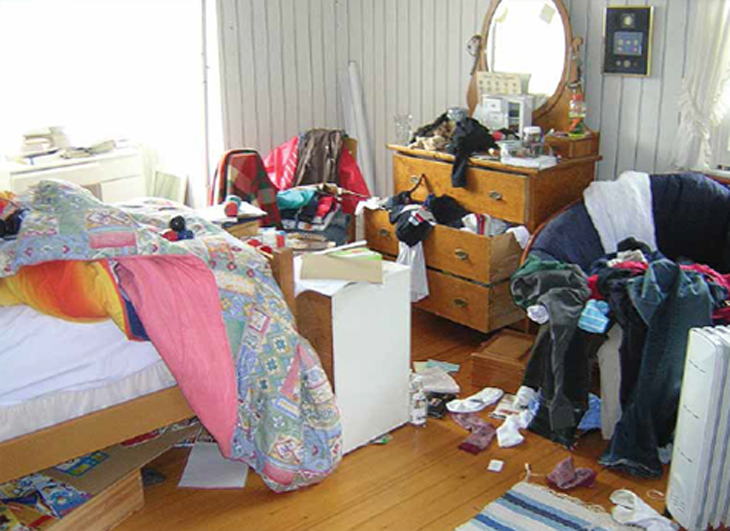♪ It’s the most wonderful time of the year…♪ Do you remember that ingenious commercial that used the well-known Christmas song to illustrate how parents feel when the first day of school finally comes around? Even today, thinking about the image of those parents gliding happily along on their back-to-school shopping carts while their children trail sullenly behind them makes me smile.
Unfortunately, once the kids are back in class, the reality of homework, class projects, daily reading assignments, and other school-related events starts kicking in and (speaking from experience) sometimes it is as difficult for the parents to get back in the study groove as it is for the kids.
That’s why I wanted to start my family’s school year off right by putting together a list of great study tips that we can put up on our fridge and refer to when the going to gets tough. Once the research started, I figured other people might benefit from the list as well and voilà! this blog post was born. (Coincidentally, you can use some of these same skills to keep yourself organized and on track for whatever goals you want to meet in your life):
- Work in a neat environment. The space where your child does his or her homework is important to how well it gets done, so instead of having the kids get to work on a messy kitchen table, clear away all the dishes and other distractions and start with a clean space.
- Make a To-Do list. Have your child take the first 5 minutes to make a to-do list of everything he or she would like to accomplish from the time they start their homework until they go to bed at night. Include things like “take a shower” and “eat dinner” on the list so they account for all their time. Take it from me, there is something super empowering about crossing things off the list.
- Assign times to each project. Have your child try and estimate how long each thing on her to-do list should take. That way, you’ll both be able to see if there are too many things to get done in one evening.
- Prioritize. Obviously if a particular assignment is due the next day, your child will need to finish that first, and if there are so many thing on the to-do list that it isn’t possible to get them all done, you’ll get the most important stuff done at the beginning of the evening.
- Start with the most difficult thing on the to-do list first. I’ve also seen this written in professional time management advice columns, so moms and dads, this means you too!
- Keep track of the time. If your child’s to-do list is long, you’ll need to help him manage his time. This way, if he is supposed to do 20 minutes of reading and he is a bookworm who would happily read for 2 hours, you can get him back to the other things on the list before the entire evening has gotten away from you both.
- Rewards help! The rewards can be anything that means something to your child. In my house, we decided that my daughter can earn 2 extra minutes of screen time (on top of the 20 minutes she is allowed to put on her to-do list) for everything she crosses off her list, including chores such as watering the plants and feeding the cat. Never has she been more interested in doing chores!
I hope this list is helpful in getting your family back in the study groove. If the #1 thing on the list (Work in a Clean Environment) is the most difficult for your child, check out the article below from Faces magazine. It will help you use the ancient Chinese art of Feng Shui to create balance and harmony in your physical surroundings, and hopefully, play a role in optimizing your child’s study habits.
Feng Shui: Feel the Magic
By Lynn York

Feng shui (fung shway) is the ancient Chinese art of living in harmony and balance with your physical surroundings. For thousands of years, it has encouraged people to create comfortable and healthy living spaces. As your bedroom is your most important space, why not explore this ancient practice and apply its principles to your room?
Feng shui simply means “wind and water.” The Chinese believe that the forces of nature, along with the positioning of objects, influence your life. An invisible energy is created in the environment called chi (chee). Positive chi is formed whenever there is beauty or when something is done well. Negative chi is found when there is clutter or ugliness or when something is done poorly.
Chi is broken up into two types of energy, yin and yang, meaning “dark” and “light.” According to Kathryn Weber, certified master feng shui consultant, yin is dark, the kind of energy that makes you want to go to sleep at night. Yang is light, like the sun coming up in the morning that wakes you up and makes you ready to go out into the world.
“The idea of feng shui is to balance these two energies, yin and yang, so it can be like Goldilocks said — not too bright, not too dark, but just right,” says Weber. “When energy in your bedroom is just right, you feel happy and relaxed. You enjoy being there.”
The primary function of the bedroom is to provide a restful place for good sleep. However, it is also the space where you do homework, relax, hang out with friends, listen to music, and create. It affords you the most privacy and freedom to be yourself. Thus, your bedroom is an expression of who you are and what you want to be. Your overall health, interaction with family and friends, and study habits will improve using feng shui.
“Feng shui is a lot like food,” says Weber. “You need a balanced diet of different foods. If you only ate one kind of food, like candy, your health would suffer. It’s important to have a relaxing (yin) place, maybe a reading corner in your room with a chair and books, and a bright fun (yang) place such as a desk with a computer where you can play games. Having both of these kinds of activities and areas in your bedroom can help you feel balanced and happier.” If you share a bedroom with a brother or sister, make sure you have some sort of screen to allow each of you to personalize and individualize your own section of the room.
Mapping Out Your Own Bedroom
Are you ready to turn your bedroom into a happy habitat? It’s really quite simple. Remember, you want to create a balance of yin and yang activities to promote good chi. Get your parents’ permission and you’ll be ready to feel the magic of feng shui by changing your bedroom floor plan.
- Draw an imaginary line down the middle of your room.
- On one side of the room, focus on the yin activities. Reading, sleeping, and listening to music are examples of these. Your bed and books are on this side.
- On the other side of the room, focus on the yang activities. This is the fun area. Games, toys, a computer, drawing materials, and a musical instrument, if you play one, should be on this side of the room.
- A study area with a desk and lamp to do homework by should be put right on the imaginary line. When you are sitting at your desk, you should be able to see when someone enters the room. Display drawings, crafts, awards, trophies, ribbons, tests with good scores, and other items that display your achievements. Maps and a globe are helpful as well.
- Clear the clutter. Clean out jammed closets, drawers, and the space beneath the bed. Creating this open space will help you feel less pressured and more creative.
- If at all possible, have the room painted in neutral colors. Use light, color, and your artwork to make your bedroom bright and happy. Hang pictures of your family and friends.
- A telephone, television, fish tank, fountains, and active night animals such as hamsters should not be in the bedroom. The room should have many yin qualities so it’s peaceful at night.




